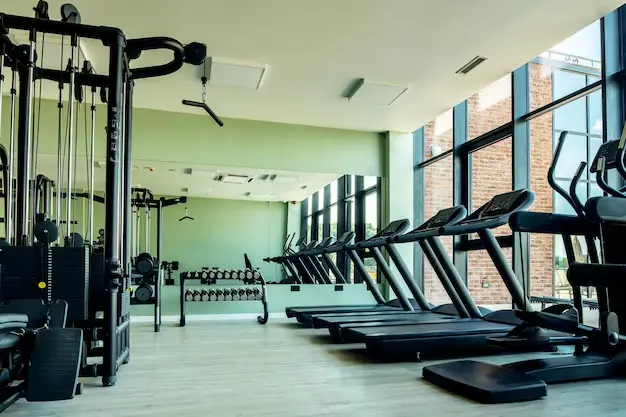Athletes of all levels and disciplines can benefit from suspension training, which is a very effective kind of exercise. It involves performing a variety of bodyweight exercises while using a suspension trainer, a piece of training equipment made up of two straps with handles attached to an anchor point. Suspension training is especially useful for athletes because it forces them to work their stabilisers and core muscles continuously, which enhances balance and general body control. Additionally, it permits a wider range of motion and may enhance flexibility and mobility.
What is Suspension Training for Athletes?
Suspension trainers, which are pieces of exercise gear made of two straps with handles coupled to an anchor point, are used to conduct a range of bodyweight exercises during suspension training. It is a well-liked method of exercise since it can be applied to enhance balance, flexibility, strength, and stability. The user of the suspension trainer can alter the length of the straps to change the degree of difficulty of the workout by anchoring it to any secure object, such as a door frame, a tree, or a strong beam. Athletes can do a variety of exercises while suspended above the ground using the straps, including push-ups, pull-ups, squats, lunges, and planks.
Suspension training is especially useful for athletes because it forces them to work their stabilisers and core muscles continuously, which enhances balance and general body control. Additionally, it permits a wider range of motion and may enhance flexibility and mobility.
The Benefits of Suspension Training for Athletes
Athletes of all levels and disciplines can benefit from suspension training, a very effective kind of exercise. The following are ten advantages of suspension training for athletes:
- Increased Core Strength: Suspension training forces athletes to use their stabilisers and core muscles continuously throughout the movement. This enhances general body control and balance in addition to fostering the growth of a solid and sturdy core, which is crucial for players in all sports.
- Strengthening of Muscles: Suspension training is a very efficient approach to strengthening muscles since it uses the individual’s own body weight as resistance. It is a very flexible kind of exercise since athletes can target particular muscle areas by varying the length of the straps.
- Greater Range of Motion: When compared to traditional weight training, suspension training gives athletes a wider range of motion for a variety of activities. For athletes who must maintain a high level of mobility for their sport, this can aid in enhancing flexibility and mobility.
- Improved Balance and Stability: Suspension training forces athletes to stabilise their bodies during each exercise, which aids in improving balance and stability. For athletes who must maintain stability and balance during dynamic movements, such as in sports like gymnastics and martial arts, this can be especially helpful.
- Low-Impact Training: Suspension training is a low-impact kind of physical activity, making it the perfect choice for athletes who need to avoid high-impact sports due to an injury or joint pain. It is a safe and efficient method of training because it also lowers the danger of harm.
- Portable and Convenient: Suspension training is extremely portable, allowing athletes to take their workout with them wherever they go. Athletes who frequently travel or who need to train on the go may find this to be extremely helpful.
- Enhances Athletic Performance: Suspension training can improve athletic performance in a variety of sports by enhancing core strength, muscular strength, balance, and stability. Athletes that use it can avoid injuries and bounce back from practice and competition quicker.
- Time Efficient: Suspension training allows players to target numerous muscle groups at once, making it a very time-effective form of exercise. This can enable athletes to work their entire body in less time than they would with conventional weight training.
- Highly Versatile: Suspension training is a highly adaptable form of physical activity that may be customized to meet the unique needs and objectives of athletes. Athletes can target particular muscle groups and enhance or reduce their intensity by altering the length of the straps and the body’s tilt.
- Engages the Mind: Suspension training forces athletes to concentrate on each exercise and engage their minds, which can assist in increasing mental focus and clarity. For athletes who must retain concentration during practice and competition, this can be especially helpful.
Conclusion
In conclusion, suspension training is a very effective form of physical activity that has advantages for players in a range of sports. In addition to being low-impact, portable, time-effective, and extremely versatile, it enhances muscle strength, range of motion, stability, and balance. Athletes can improve their sports performance and attain their goals by including suspension training in their training regimen.




































